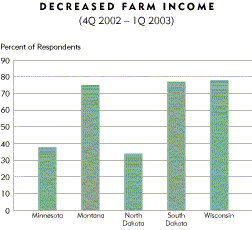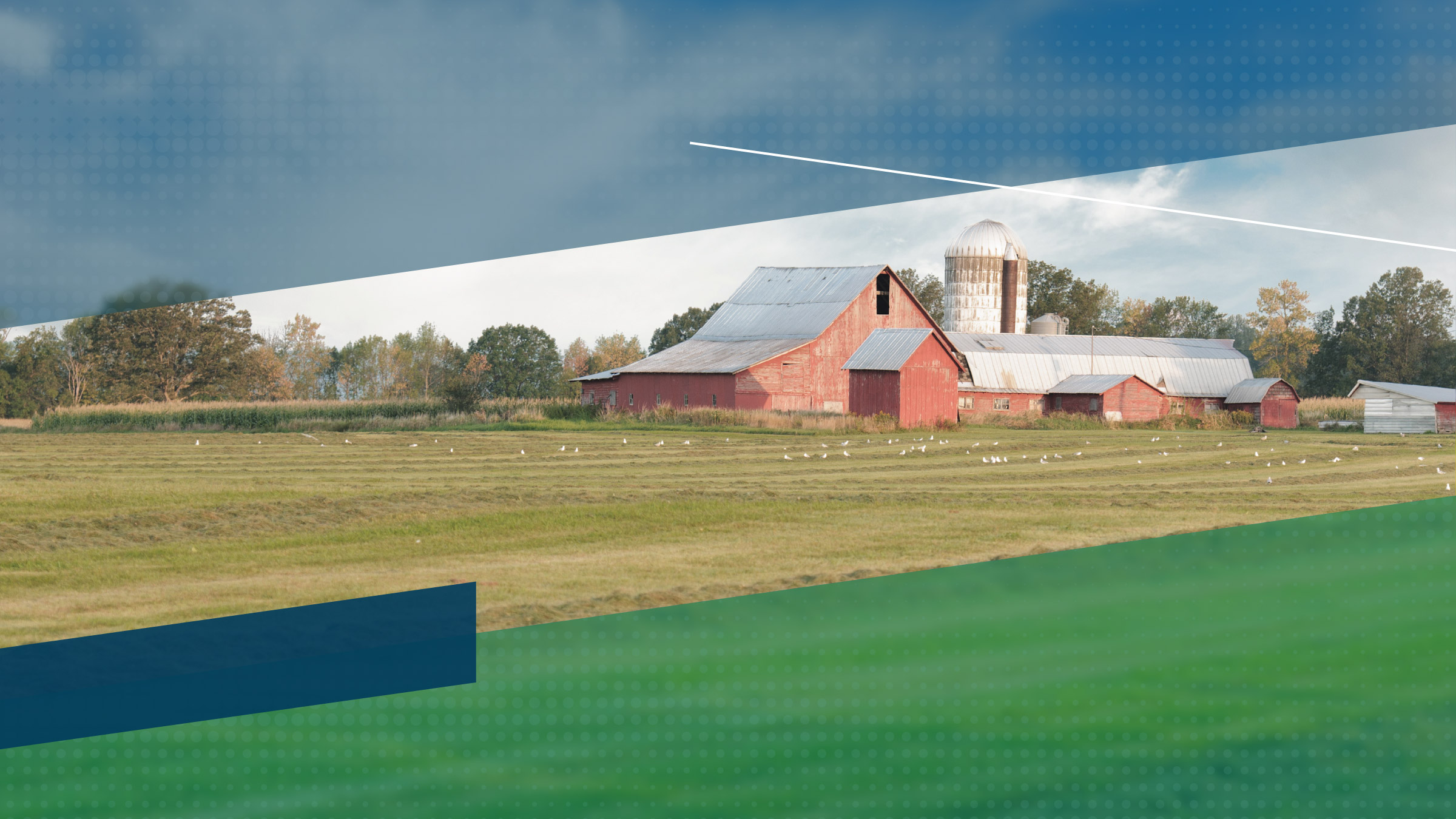Agricultural financial conditions deteriorated during the first quarter in Wisconsin, Montana and western South Dakota, according to the Minneapolis Fed's first-quarter agricultural credit conditions survey. Farm income and loan repayments were down in these areas. However, lenders in Minnesota and North Dakota fared better during the slow winter months. The outlook across the district was generally pessimistic, as more lenders expected continued decreased income during the spring. Nonetheless, the mood may have changed; this survey was conducted in March, before most of the heavy spring rains fell across much of the district.
Farm income
About half the survey respondents reported a decrease in farm income in the first quarter, while only 20 percent noted an increase. Bankers were especially negative in Montana, South Dakota and Wisconsin: 75 percent, 77 percent and 78 percent, respectively, reported decreased agricultural income. "Depressed milk prices have really hurt our farmers," observed a western Wisconsin lender. A South Dakota lender commented that "cash grain returns were impacted by the drought." Minnesota respondents were the least pessimistic, as one-third reported higher farm income, which lenders primarily attributed to last fall's high crop yields and prices leading to a strong winter financial position.

Source: Federal Reserve Bank of Minneapolis
Farm household and capital spending
Household income and capital spending followed approximately the same pattern as farm income. Overall household spending decreased: 30 percent of respondents districtwide reported lower household spending, and 52 percent noted no change. Responses from some state lenders were more dramatic: 67 percent of Wisconsin, 43 percent of South Dakota and 42 percent of Montana lenders revealed lower household spending.
Meanwhile, the drop in capital spending was harsh: 53 percent of lenders overall indicated decreased levels, with a low of 32 percent of Minnesota respondents and a high of 100 percent of Wisconsin bankers. "We are losing dairy farmers," reported a Wisconsin lender.
Loan repayments, renewals and limits
The rate of loan repayments decreased, and loan renewals or extensions increased. The 14 percent of lenders who reported increases in the rate of loan repayment were more than offset by the 34 percent who noted decreases. Minnesota agricultural lenders were the most upbeat, with 27 percent indicating higher rates of loan repayment; 23 percent reported slower rates of repayment. In contrast, two-thirds of Montana respondents reported decreases, and none reported increases in repayment rates.
At the same time, 30 percent of all district respondents noted increases in loan renewals or extensions and 10 percent decreases. In Montana three-quarters of lenders observed more ranchers renewing and extending loans. "We have done more loan extensions than usual due to a poor irrigated malt barley crop in our area," commented a Montana lender.
There is a limit to the amount that agricultural customers can borrow. District respondents reported that 23 percent of their farm and ranch customers were at their loan limit—from a high of 34 percent in Montana down to 18 percent in South Dakota.
Demand for loans, required collateral and interest rates
Overall loan demand was level during the first quarter; the number of respondents who indicated increased loan demand about equaled the number reporting decreased demand. Meanwhile, one of five lenders said that collateral requirements increased, while only 1 percent indicated decreasing requirements. Average interest rates on fixed loans dropped about a third of a percent from fourth quarter of 2002 to first quarter of 2003. "Most farmers are becoming debt-conscious and fearful that rates will rise within the next 18 months," commented a South Dakota banker. Almost all respondents indicated that they had no shortage of funds to lend.
Land values
Overall land prices continued to increase. "The only bright economic condition is the demand for agricultural real estate," wrote a banker from South Dakota. District farmland and ranchland prices increased an average of 12 percent and 13 percent, respectively, from a year ago. Average farmland price increases varied across the district from a 5 percent increase in Wisconsin to a 22 percent increase in Minnesota. A cautionary note: Real estate prices can vary significantly, not only from state to state or county to county, but even within a county.
Outlook
Agricultural income was expected to decrease in the second quarter of 2003 for all district states. Across the district, 42 percent of respondents anticipated lower income, while only 7 percent expected higher income. In Montana and western Wisconsin, two-thirds of respondents forecast decreased income.
"Outlook is very poor," reported a Wisconsin lender. "Fertilizer and fuel prices will squeeze 2003 farm margins," commented a North Dakota banker.
This expected reduction in income affects other areas: 48 percent of district respondents anticipated lower levels of capital spending, and 8 percent predicted increased spending. In addition, loan demand, renewals and extensions were expected to increase in the second quarter of 2003.





